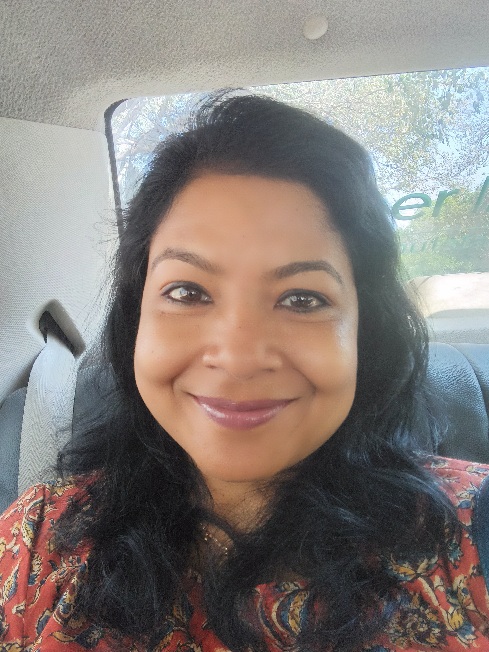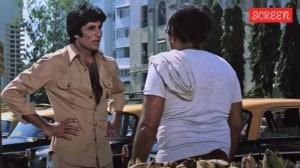Know Your City: Poona Guest House, a heritage restaurant that once nurtured, and nourished, artists
At PGH, creative people starting out or down on their luck found shelter and meals — leading to it being called the mayka of artists
 Poona Guest House on Lakshmi road. (Express Photo By Pavan Khengre)
Poona Guest House on Lakshmi road. (Express Photo By Pavan Khengre)The Poona Guest House (PGH) in Budhwar Peth is closed on Mondays so that from early evening, the 87-year-old dining room can transform into a venue for music recitals, talks on books and other cultural activities. It was here that Kumar Gandharva, Bhimsen Joshi, Vasantrao Deshpande and Lata Mangeshkar, among others, used to perform at a time when they were young and unknown, and when seating at PGH was on the floor. “To keep that heritage, we don’t allow just about anybody to perform. We look for quality and dignity,” says Kishor Sarpotdar of PGH.
 Express Photo By Pavan Khengre
Express Photo By Pavan Khengre
PGH, originally called Poona Refreshment House, grew from art and nourished it. Here, creative people, who were starting out or down on their luck, found shelter and meals — leading to PGH being called the mayka or mother’s home of artists. Below the staircase, for instance, there is a room where yoga guru B K S Iyengar stayed when he came to Pune with the dream to popularise breathing and asanas. “I joined the business after finishing my MBA in the 1980s, and my father, Charudatta Sarpotdar, told me, ‘If you want to do business, don’t come here. I am not into business.’ At that time, 80 per cent of rooms were given to artists for free because they did not have films or any other work in hand,” says Kishor.
A founder with an interest in filmmaking
PGH was set up by Narhar Damodar aka Nanasaheb Sarpotdar on the last day of Ganeshotsav, Anant Chaturdashi, in 1935. “On the menu was a rice thali for two annas so that the common people of Laxmi Road could eat well on Anant Chaturdashi. Nanasaheb, who had the gift of the gab, quickly made PGH a place where one could drop in to meet artists and literary icons,” says Sanat Sarpotdar, the fourth generation of the family in the business. To commemorate the anniversary of PGH on Anant Chaturdashi this year, Sanat brought out a coffee table book, Poona Guest House.
Nanasaheb was born in Nandivali, Ratnagiri, in 1896 and grew up with an interest in storytelling and films. “He went to Mumbai to study but left home at 13 to join the Maharashtra Drama Society. There, he played a variety of roles in films such as Vatsalaharan, Sairandhri and Damaji. At his mother’s insistence, he went to Indore to live with a relative and continue his education but did not pay attention to his studies. Finally, in 1919, he joined the newly-established Maharashtra Film Company,” writes Sanat in the book.
On Vijayadashami in 1927, Nanasaheb started the Aryan Film Company with an investment of Re 1. The first film was Har Har Mahadev. “The British Censor Board objected to the name, so it was changed to Namak Haram,” says Sanat. These were the last years of silent films. In 1931, Ardeshir Irani’s Alam Ara would hit the screens and start the era of the talkies. But, from 1928 to 1930, Nanasaheb produced and directed 24 silent films. The heroine of six of these films was a young girl, a child actor who had come from a village near Nashik and would become famous as Lalita Pawar. “Nanasaheb spotted budding talents and gave them a platform in his films,” says Sanat. Nanasaheb also directed a number of films for other production houses and wrote scripts for plays. But, after the advent of talkies in 1931, he did not produce any more films.
A strictly Maharashtrian menu
“Filmmaking was a risky business and Nanasaheb saw that artists who were coming to Pune needed a place to stay and eat. This led to the founding of PGH,” says Sanat. Nanasaheb passed away in 1940 and was succeeded by Charudatta, popularly called Charukaka. Every generation has kept the menu strictly Maharashtrian. Every morning, the kitchen of PGH gets ready for demands for rice, bhakri, bhaji, wadi, sabudana khichdi, pohe, amti, thalipeeth and misal.
Jayesh Paranjape, who won a National Award for Responsible Tourism Project from the Ministry of Tourism last month, takes participants of his popular heritage tour, called the Old City Breakfast Walk, to PGH. “PGH, for me, is a comfort zone and one of our walk’s highlights. The reason is that they have stuck to their all-Maharashtrian menu since the time they started. Very few restaurants in the city can boast of an all-exclusive Maharashtrian menu and PGH is one of them. With the changing trends, they have also included meal combos and snacks which are a great way to feature Marathi food to non-Marathi visitors. You seldom see dishes such as dadpe pohe, thalipeeth and puran poli on regular restaurant menus. I hope they keep this tradition of highlighting our cuisine up in the many years to come,” he says.
 Express Photo By Pavan Khengre
Express Photo By Pavan Khengre
How does an exclusively Maharashtrian food place fare financially in a market packed with Western fast food and sumptuous offerings from Punjab, Tamil Nadu and other states of India? “Keeping a legacy alive is very difficult as a business. Labour, rentals and other charges are the same for all kinds of cuisine, but you cannot make good margins from Maharashtrian food in Maharashtra. People are not willing to pay as much for kanda bhaji as they would for manchurian on a Chinese menu, or matar usal as opposed to peas masala, or ukdiche modak as compared to a small piece of pastry,” says Kishor.
But, at The Pavilion and Balewadi, where PGH has outlets, a new generation, mostly techies on a lunch break, is finding out that PGH’s offerings suit the current trend for health food. The thali, comprising roti, rice, two types of bhaji, wadi and chaas, among others, can be eaten every day, unlike commercial dishes. At the Laxmi Road outlet, the passing years have resulted in changes, from wooden logs as fuel to gas; from banana leaves to steel plates and from satranji (carpet) to chairs. “We have also made slight changes to the menu, by giving pav bhaji, tawa pulao, juices and French fries to customers. I tell myself that these have been sold on Mumbai Chowpatty forever so they qualify as Maharashtrian,” says Sanat. Among the other changes is making ukdiche modak available throughout the year rather than only during Ganeshotsav.
PGH, however, continues to serve upwas (fasting) food and traditional dishes during festivals. For Diwali, they have a faral (collection of snacks) menu, and packed delicacies “since a lot of families have stopped making chakli, choora and other such treats”. Kishor had started the practice of making faral during Diwali in the 1970s, selling it from a car driven across the city for people who could not come to Laxmi Road.
“It was Maharashtrian food that drew the attention of Pandit Jawaharlal Nehru. After Independence, PGH was providing catering for Congress assemblies, and one such meeting was held in Nashik. Nehru told Bandopant Sarpotdar, the eldest son of Nanasaheb, to start serving Maharashtrian food in Delhi as well. Taking his advice, Bandopant opened PGH in Karol Bagh and Gurdwara Road in Delhi and started catering to the Parliament canteen,” says Sanat. These outlets became hubs for people from Maharashtra and other regions visiting Delhi until logistics forced them to shut down the branches in the national capital.
 Express Photo By Pavan Khengre
Express Photo By Pavan Khengre
Taste of nostalgia
The congestion on Laxmi Road has impacted footfalls at PGH. The elderly also find it difficult to navigate the steps that lead to the first-floor dining hall. “Many of them come to The Pavilion, where there are wheelchairs at the door,” says Sanat. Tanay Sarpotdar, the grandson of Bandopant, adds, “Many a time, people visit Laxmi Road because of nostalgia and a love for the city’s history. PGH was the cultural sweet spot in what used to be the heart of the city. New guests are drawn by the attraction of an important cultural landmark.”
A regular visitor today is a 90-year-old former filmmaker whose memory isn’t what it used to be — except that he remembers everything that happened at PGH in the good old days when a group of young people were watching plays, making films, writing scripts and trying to change the world through art.













